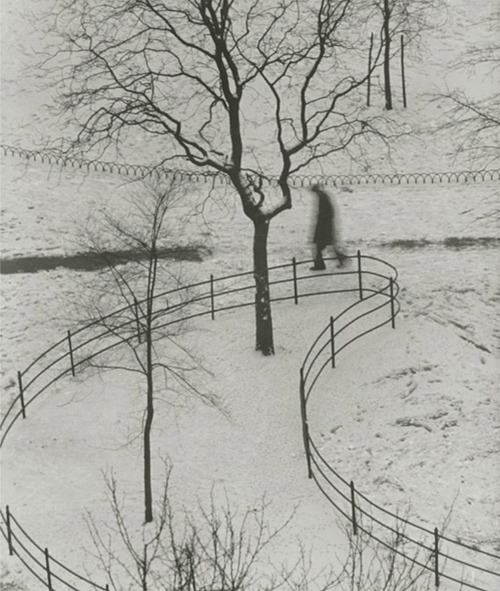Word of the day : hendiadys : the expression of an idea by the use of usually two independent words connected by 'and' (as in 'nice and warm' or 'sound and fury')
Gabriel had his first ever vomit yesterday. He's feeling better now, which is good news. We think he ate something that didn't really agree with him (it's probably not a good idea to but yogurt from a Statesboro grocery store), combined with being overtired, dehydrated, maybe overly full. He's recovered, though.
Julia posted an interesting piece on her blogsite:
http://arthistorymusings.tumblr.com/
And my the teams that I root for in the NFL - New England, Cincinnati, Jacksonville, San Francisco, Philadelphia - have all had good drafts. Only Atlanta has been a comparative letdown - mainly because they haven't really had any high picks.
Andre Kertesz (#30)
Kertesz (1894-1984) had a remarkable career in three different countries. In Hungary, where he was born, he joined the army and made a series of photographs that showed soldiers away from battlefield - in "unimportant" moments. Making use of the revolutionary handheld camera, his images were fresh and unique.
In Paris in the twenties and thirties, he worked for a variety of magazines. Of course, as we can imagine, he knew many artists in the city and photographed them: Brancusi, Calder, Chagall, Mondrian, Russian filmmaker Sergei Eisenstein. He studied the people of the street, began to play around with light and shadow. During this period, he was most well-known for his series of distorted nudes, for which he used three mirrors and an early zoom lens, experimenting with reflections.
He moved to America, where he more or less spent the rest of his life, where his popularity wasn't anything to write home about until he was re-discovered in the mid-60s. From the early 50s on, he began photographing, from his apartment balcony, NYC's Washington Square Park with a telephoto lens. He evokes an intimate sense of loneliness, ephemeral images of solitude.
I think he might be one of my favorites of the photographers we've looked at so far.
Thanks:
http://www.pbs.org/wnet/americanmasters/episodes/andre-kertesz/about-andre-kertesz/645/
http://www.berry-hill.com/exhibitions/050101/detail/kertesz.html
A good article in Smithsonian about an upcoming Futurism exhibition in New York:
http://blogs.smithsonianmag.com/art/2012/04/futurism-is-still-influential-despite-its-dark-side/
One of the leading 20th century Futurist artists was Italy's Carlo Carra, a radical who signed a Futurist manifesto in 1908. By 1916, Carro, having been inspired by Italian Interventionism, Picasso, Cubism, and collage, had pretty much rejected Futurism. In 1911, he created his masterpiece, The Funeral of Anarchist Galli.
Galli was an Italian anarchist (duh) killed by the police during a 1904 strike. The police, fearing a politically-demonstrative funeral, had the internment proceedings held in a square in front of the cemetery, rather than in the cemetery. The anarchists were outraged and decided to bury Galli properly. The police rioted and attacked the anarchists, nearly knocking the coffin down!
Carra, an anarchist who attended the funeral, depicts the scene as a colorful, chaotic stampede. There is something almost mechanical about the frenzied raid. Violence and energy were important themes and ideas for Futurists, depicted here by Carra with bold, sweeping brushstrokes. Red and black, the colors of anarchism, are utilized boldly, and, strikingly, so is the reddish brown of the workers, whose very skin hues seems to have been stained with the oxidized, burnished hue of an increasingly-industrialized Milan - workers colored by their jobs.
So, in essence, this a history painting.
Thanks: http://ardfilmjournal.wordpress.com/2009/04/07/carlo-carras-funerali-dellanarchico-galli/
http://raforum.info/spip.php?article893
Let the Playoffs Begin
Info Post



0 comments:
Post a Comment